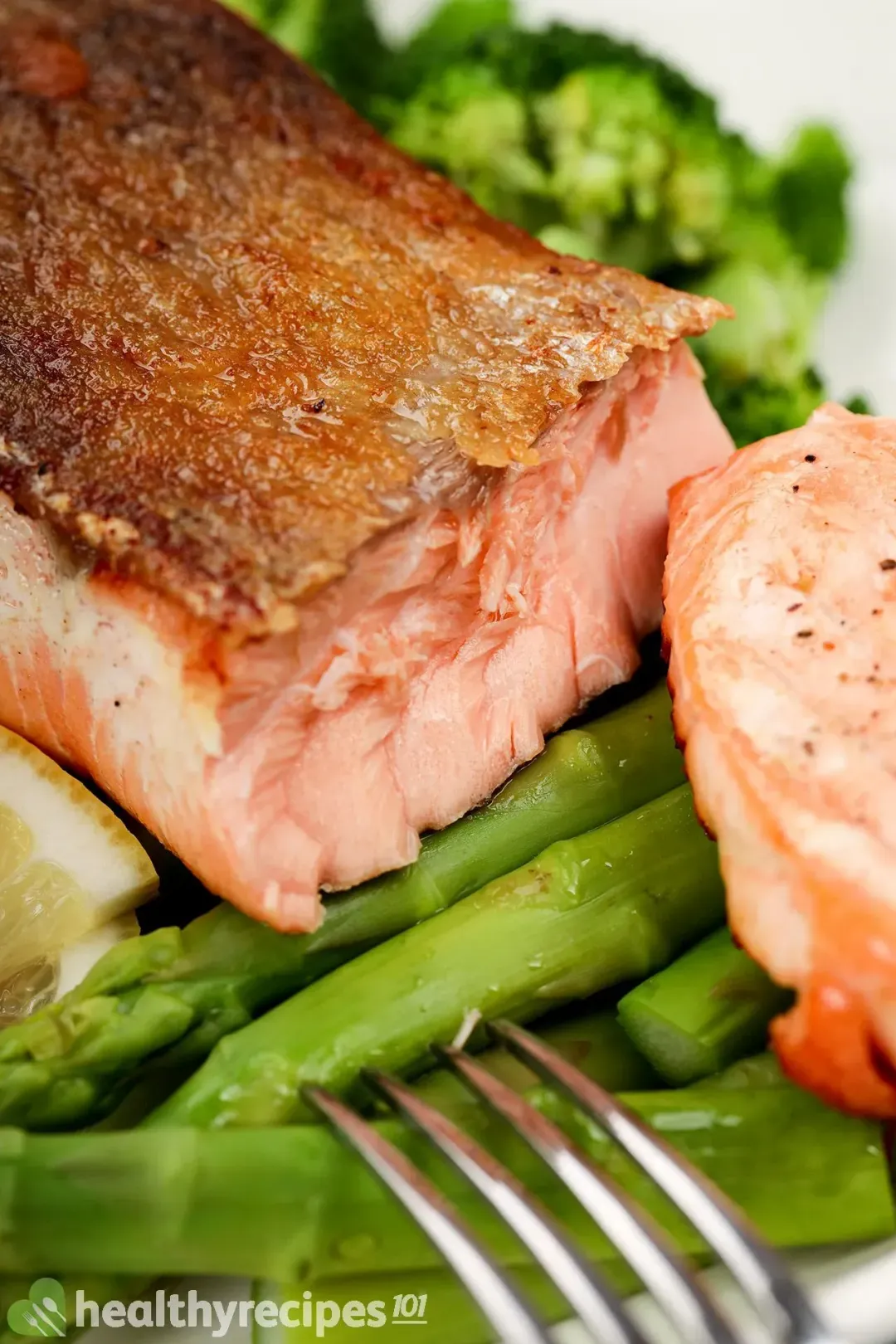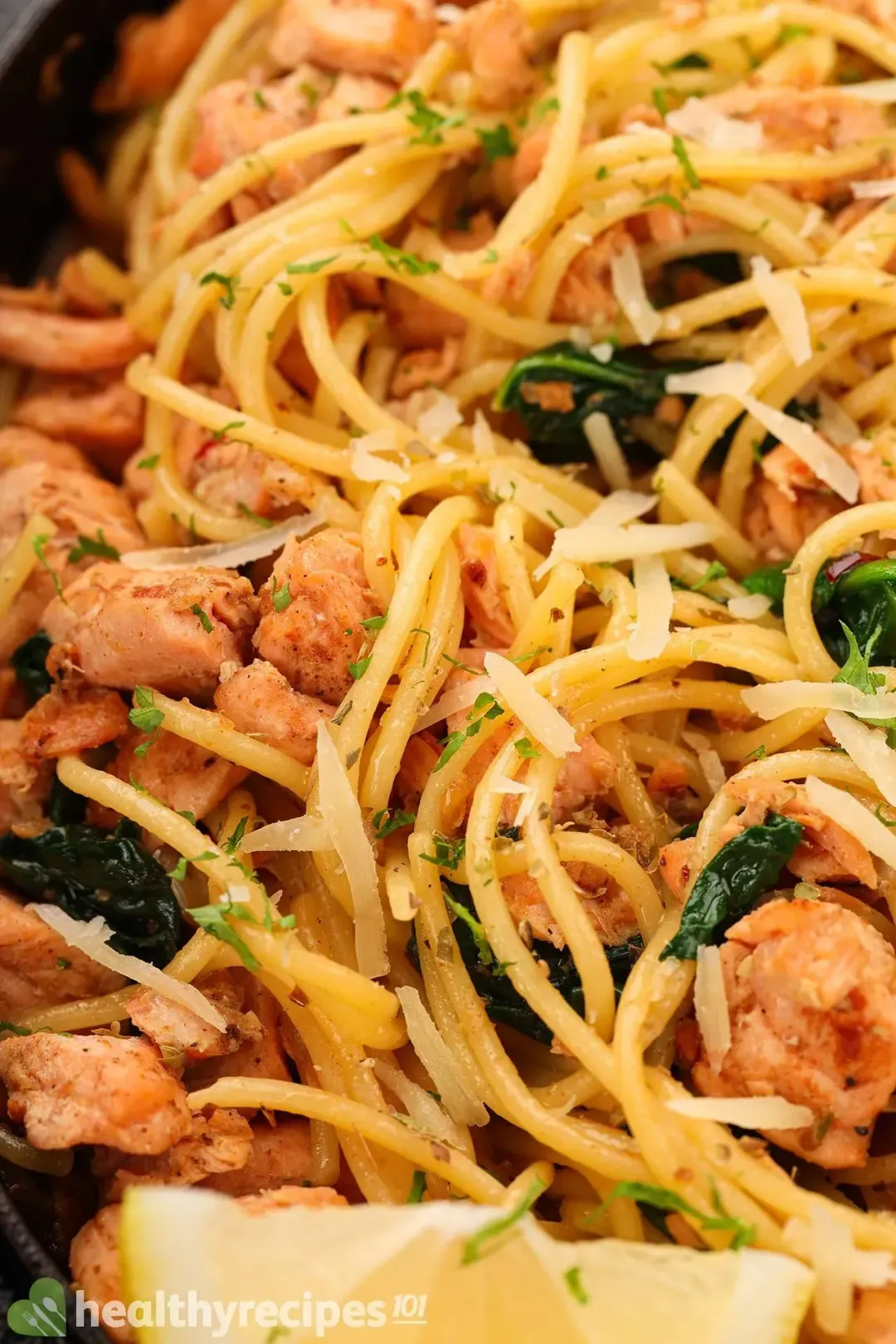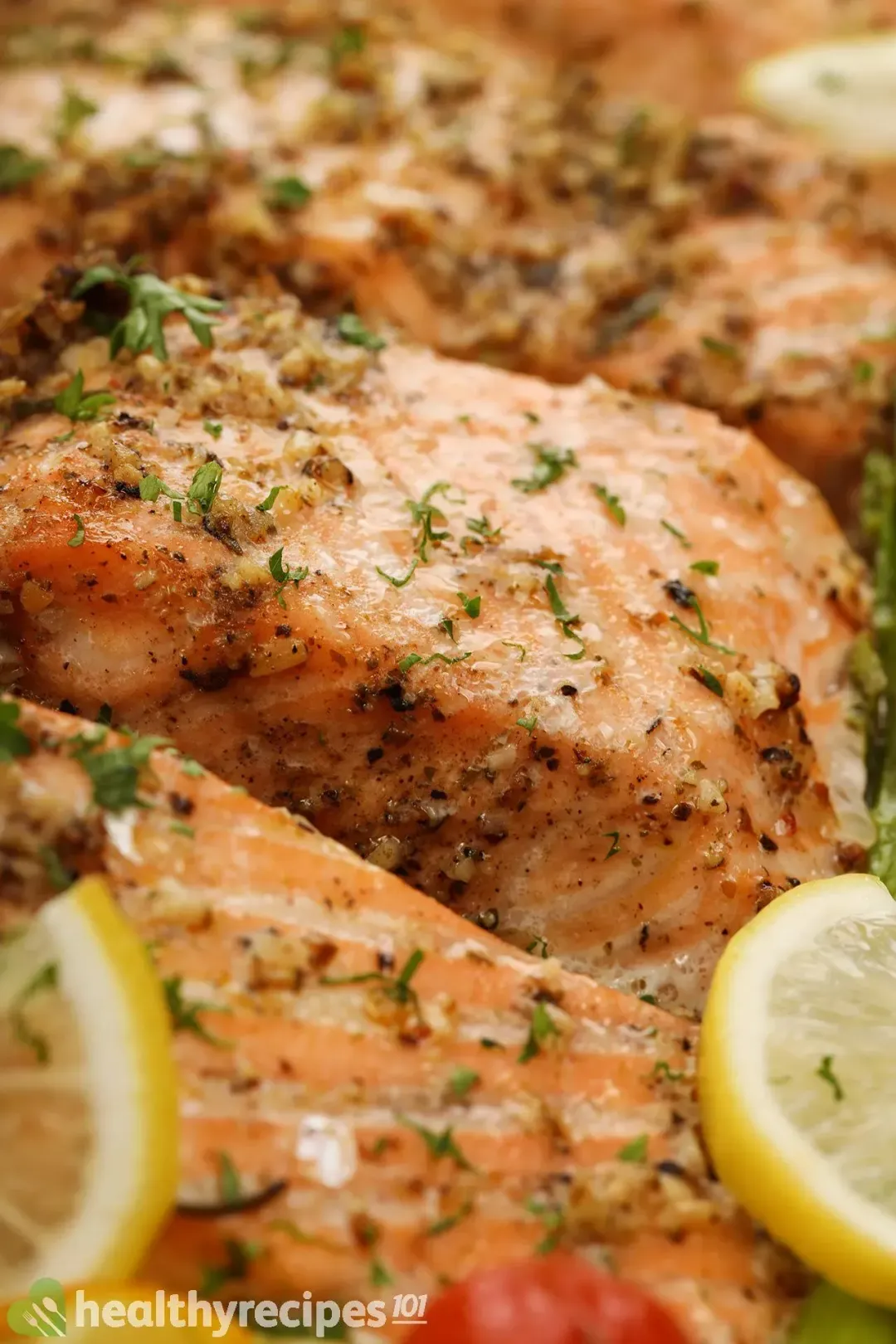This crispy-skin salmon recipe is a simple guide on how to cook this delicate fish to perfection. Before we start, here are some interesting health facts about salmon.
Is Crispy-Skin Salmon Healthy?
Yes, our crispy-skin salmon recipe is healthy.
Salmon is a relatively healthy fish with a good balance of proteins and fats, and searing it is a better method of cooking than grilling or baking it. When you sear the salmon filet, the outside will become crispy while the inside stays moist.
That said, it isn’t the only reason why we love searing salmon. Due to the high fat content of this fish, we want to use the least amount of cooking oil possible. So in the end, we only needed 1 tablespoon of olive oil to cook the fish.
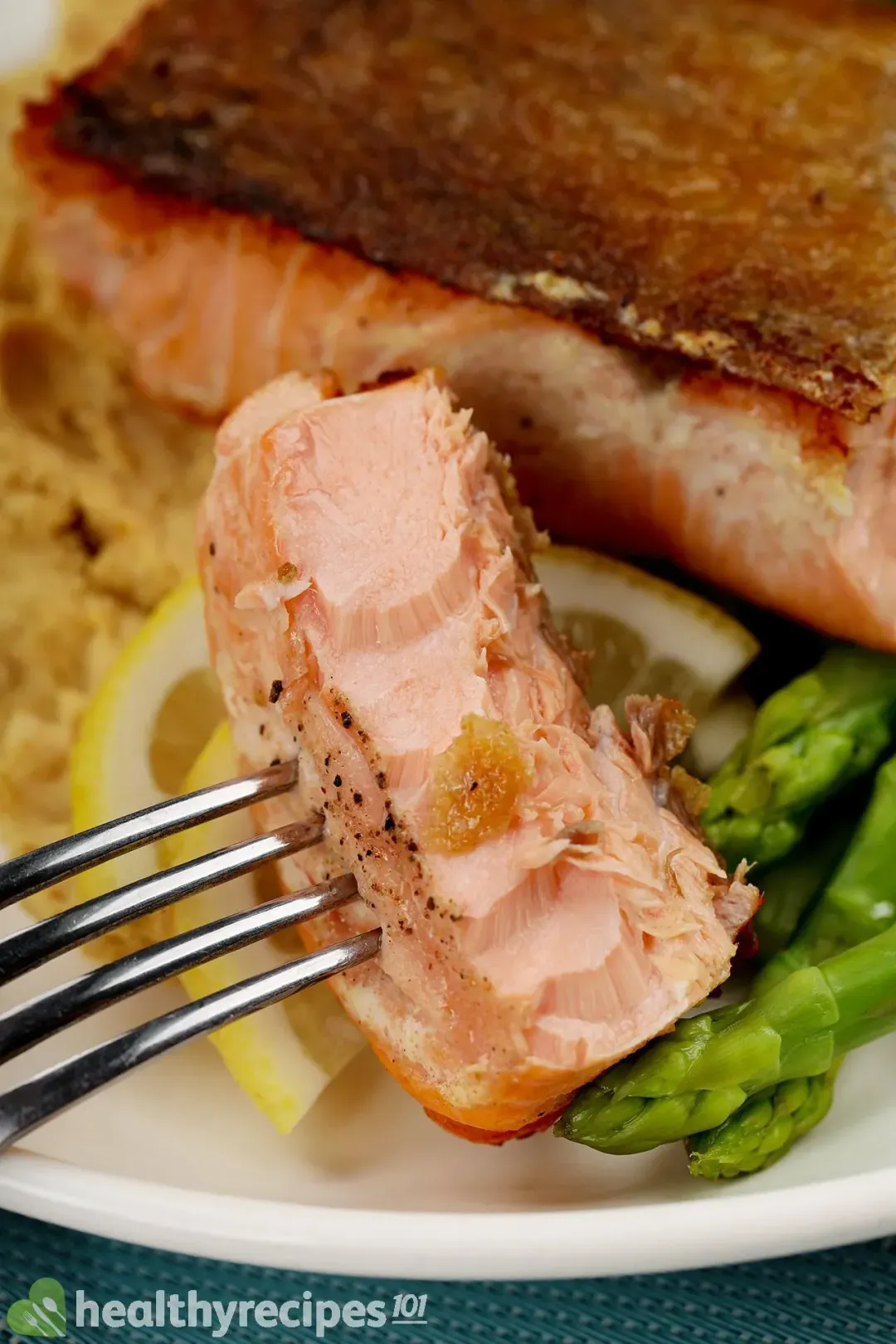
Additionally, we chose blanched vegetables as a side dish to further minimize the recipe’s oil. Those light and simple veggies help balance the rich taste of the salmon as well.
If you’re looking for more healthy salmon dishes with a balance of meat and vegetables, you may want to check out our pan seared salmon recipe.
Is Salmon Skin Good for You?
Salmon is a delectable and healthy fish and its skin is typically considered safe to consume.
While some like to remove the skin from salmon filets before cooking, others swear by keeping it on and eating it for added health benefits. Along with protein, it contains omega-3 fatty acids, vitamins B and D, and minerals such as niacin and phosphorus.
However, due to its high fat content, salmon skin may not be so appetizing for those who keep a close eye on their calorie intake.
Ingredients You'll Need
Here’s what we used for our crispy-skin salmon recipe:
- Salmon: As the name of the recipe suggests, we used skin-on salmon filets. To prepare the salmon, we removed the scales, cleaned, and patted the filets dry with paper towels before cooking.
- Spices: The only seasonings we used for the salmon were salt and pepper.
- Vegetables: We added a small side of boiled broccoli and asparagus. The addition of veggies should make you feel fuller than eating the fish alone.
- Mashed chickpeas: We made a simple mash out of puréed chickpeas to accompany the salmon. It’s lighter than mashed potatoes but just as delicious.
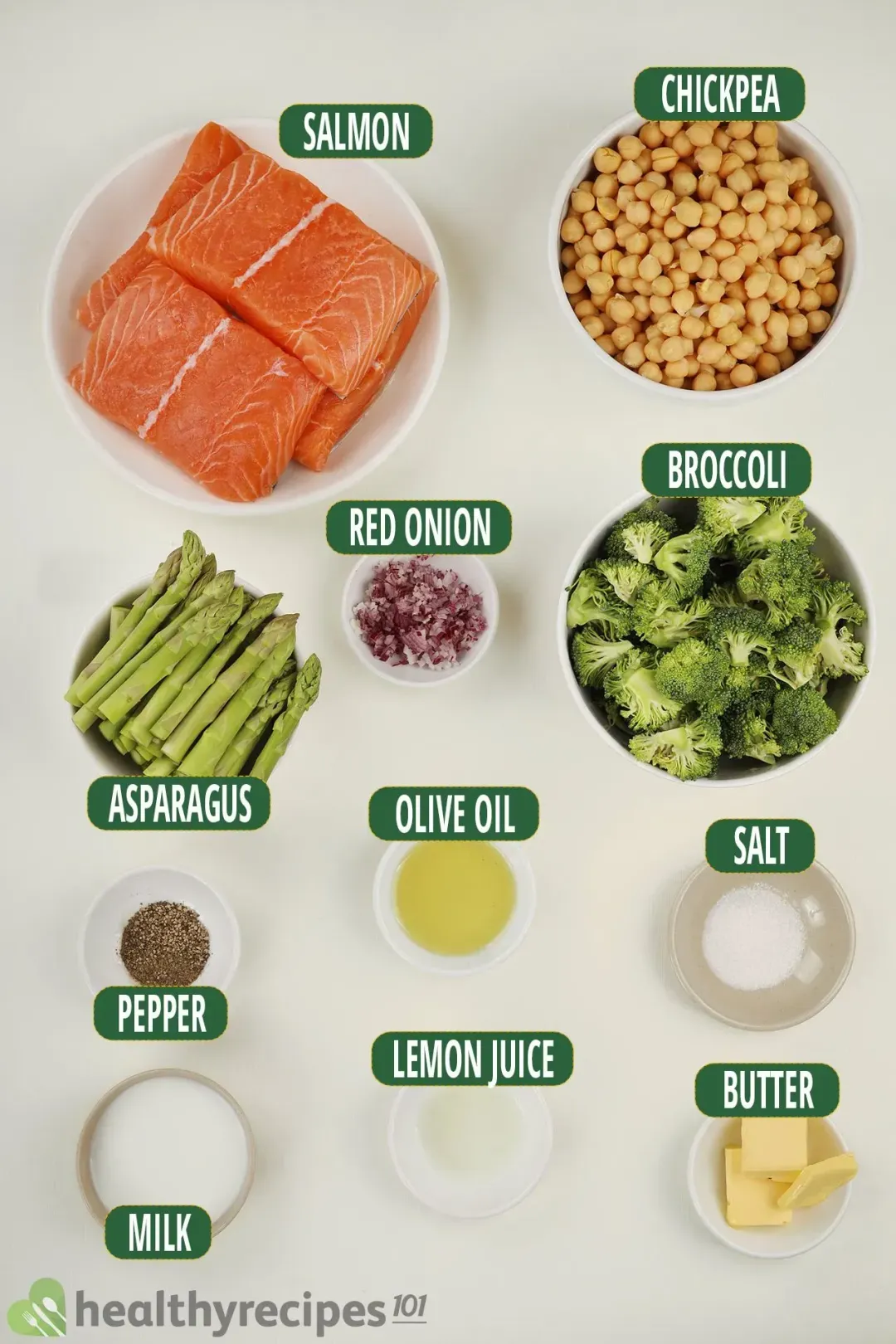
Tips for Making
Cooking skin-on salmon to make it crispy without overcooking the fish is actually easier than you might think. Here’s what you need to do:
- Clean the salmon and pat it dry with a paper towel. Be sure to remove as much excess water as possible.
- Use a nonstick skillet to cook the salmon. It will help keep the skin intact. Skin may stick to ordinary pan materials, causing it to tear when you flip your filet.
- Add oil to the skillet and heat it over medium-high heat.
- Place the salmon in the skillet, skin side down. Reduce the heat to medium-low immediately afterwards so the skin cooks slowly, allowing it to crisp up without overcooking it.
- While the skin is crisping up, try not to flip or lift it up to have a sneak peek. You may end up breaking the skin or the whole filet.
- Be patient and wait for the edges of the skin to turn golden brown. The salmon filet should be cooked halfway through (as indicated by the change of color), and it should be easy to flip now.
The purpose of searing the skin over higher heat in the beginning is to make the skin crispy at first. Then, cooking it at a lower temperature for a long time will continue to enhance that crispiness.
Once you’re done cooking, the skin will remain crispy throughout the whole meal.
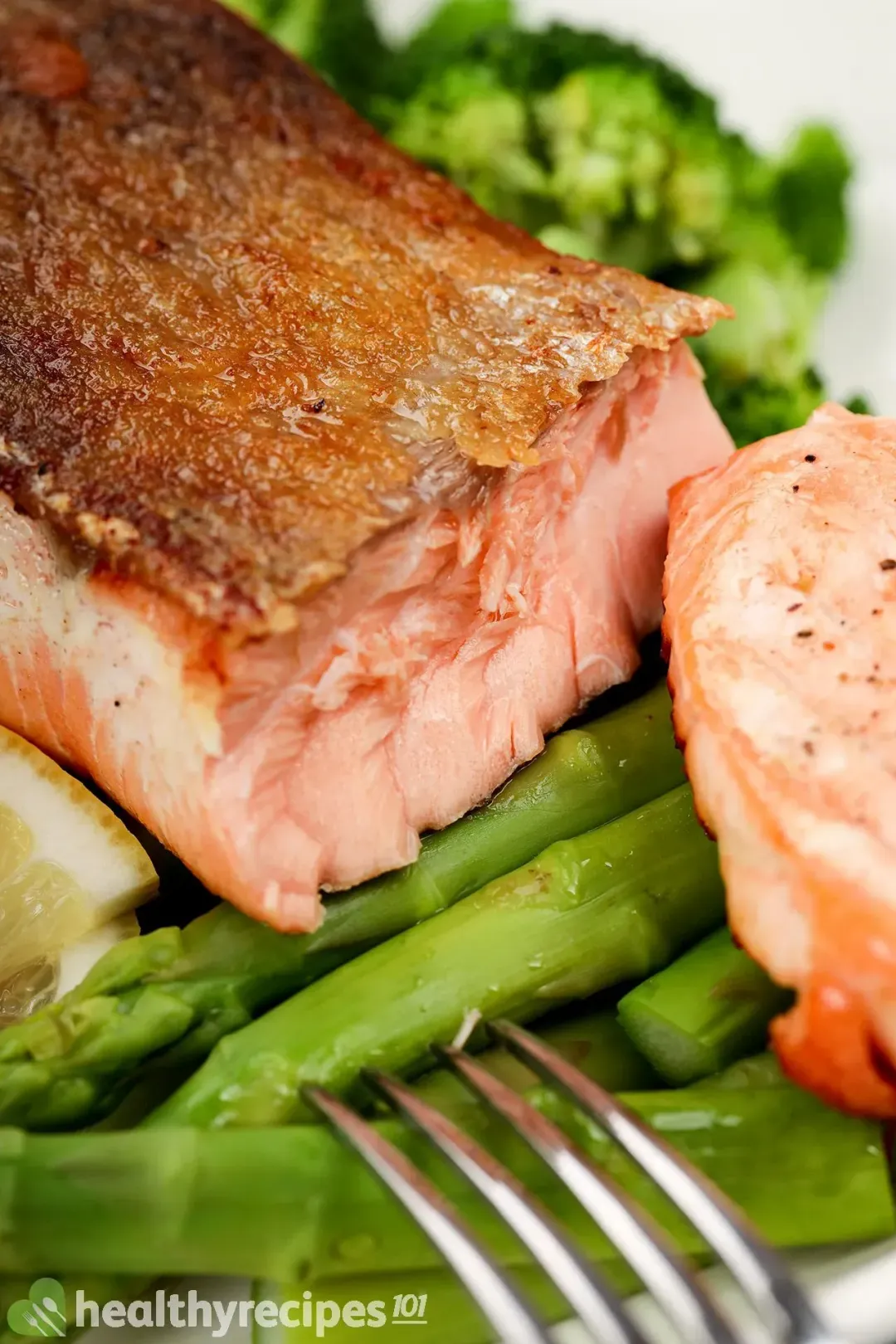
Storing and Reheating
1. Refrigerating
Leftover salmon should be stored in an airtight container in the fridge. Doing so can extend its shelf life to about 5 days.
We recommend storing the fish and vegetables in separate containers to keep them both fresh and tasty.
To reheat the salmon, simply take out a serving and microwave it for about 2 minutes. The skin may not be as crisp as when it was freshly cooked, but it will still be tasty.
2. Freezing Cooked Salmon
Besides refrigeration, you can also freeze the salmon filets and keep them for about a month. This is a good way to store food and prepare meals ahead of time.
Be sure to use freezer-safe containers to store your food. And again, don’t keep the fish and vegetables in the same container. When you defrost them afterwards, the vegetables may release excess moisture and make your salmon soggy.
What to Serve With
To accompany today’s crispy-skin salmon, we opted for a side of fresh mushroom salad and a glass of orange pineapple juice.
The salad consists of pan-seared mushroom, crunchy arugula, and a tangy lemon dressing. When paired with salmon, this salad balances the richness of the fish and refreshes your palate at the same time.
The juice can complement many a meal, making you feel fuller without having to consume too many calories.
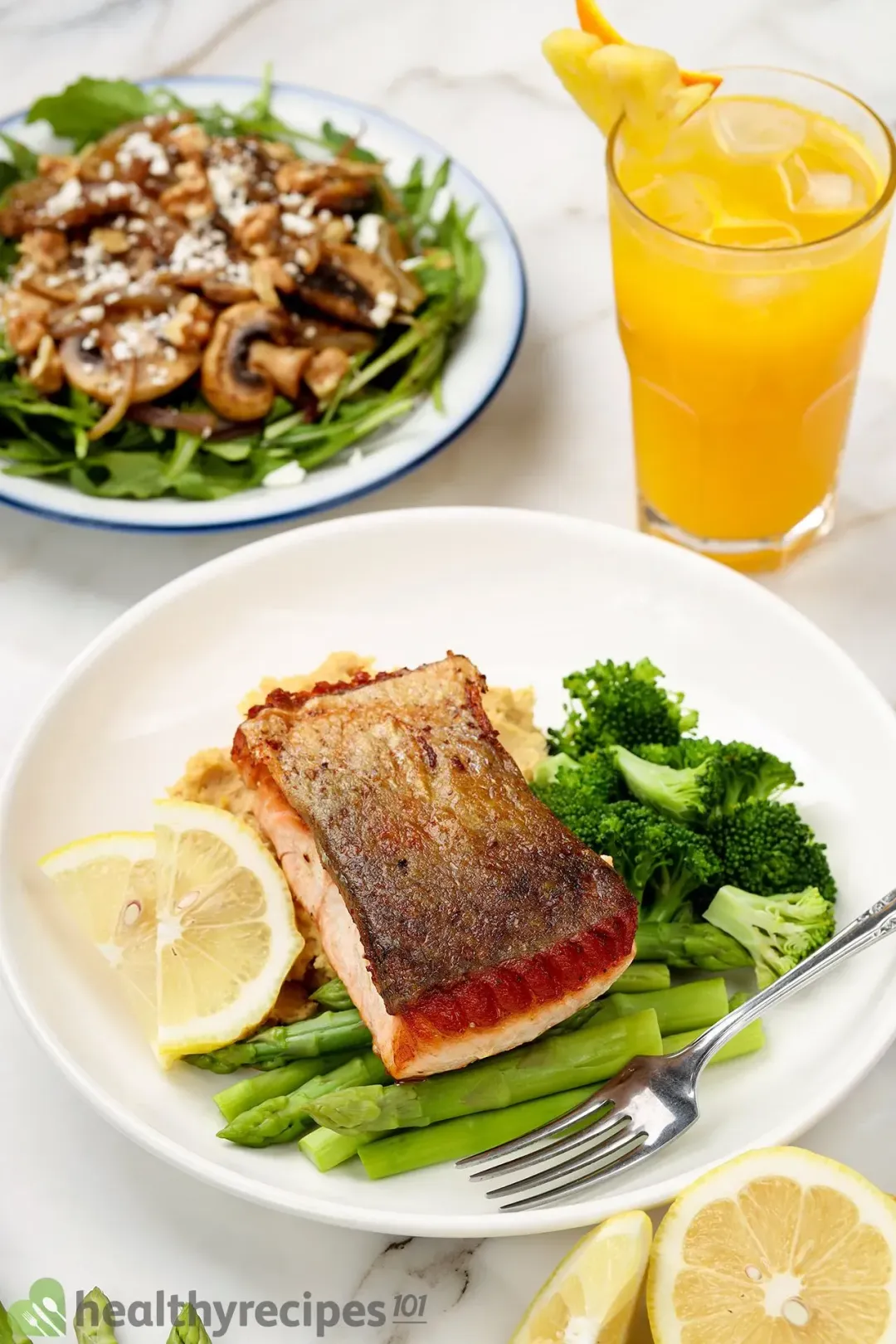
What Else to Make With Salmon
If you like your salmon both crispy and super garlicky, this recipe is what you should see next. It’s served with buttered asparagus and soft potato wedges to make a wholesome, super garlicky meal.
Or you could try seasoning the fish with cajun seasonings like we did in this cajun salmon recipe. Each glossy, flavorful filet is served with a tangy, creamy avocado salad that strikes just the balance.
For more delicious salmon ideas, have a look at this collection of crispy salmon recipes.
Crispy-Skin Salmon Recipe
Today's crispy-skin salmon recipe is all about your cooking technique. We'll show you how to cook the salmon to perfection!
- cook TIME 13 mins
- prep TIME 12 mins
- total TIME 25 mins
- COURSE Main Course
- CUISINE American
- SERVINGS servings
- CALORIES 499 kcal
INGREDIENTS
- 28 oz boneless salmon filets (scales removed)
- 20 oz canned chickpeas (rinsed and drained)
- 6 oz broccoli (cut into florets)
- 8 oz asparagus (cut in half)
- 0.5 oz red onion (finely diced)
- 1/4 cup whole milk
- 2 tbsp unsalted butter
- 1 tbsp olive oil
- 1/2 tsp salt (divided)
- 1/2 tbsp lemon juice
- 1/2 tsp black pepper
INSTRUCTIONS
Boil the vegetables: Bring a pot of water to a boil over high heat. Once the water is boiling, add 6 oz broccoli and 8 oz asparagus. Cook for 2 minutes.
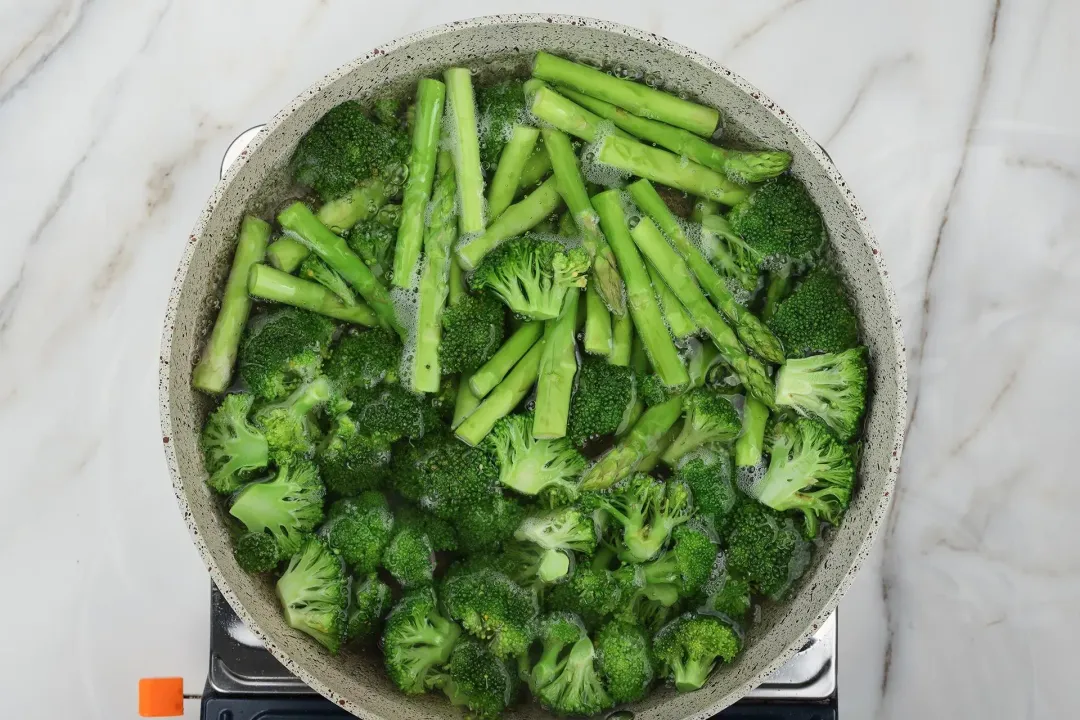
Remove the vegetables with a spider strainer and rinse with cold water so they retain their green color.
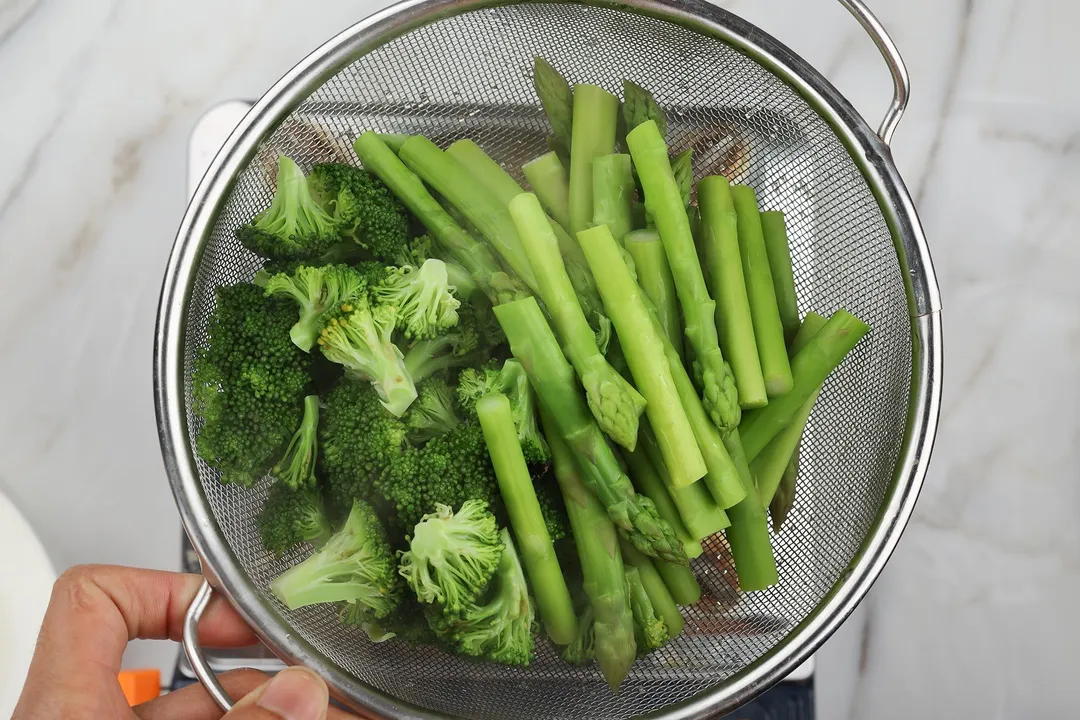
In a nonstick pan over medium-high heat, add 1 tbsp olive oil. Once the pan is hot, put the salmon filets into the pan, skin side down. Sprinkle 1/4 tsp salt and 1/2 tsp black pepper evenly over 28 oz salmon filets.
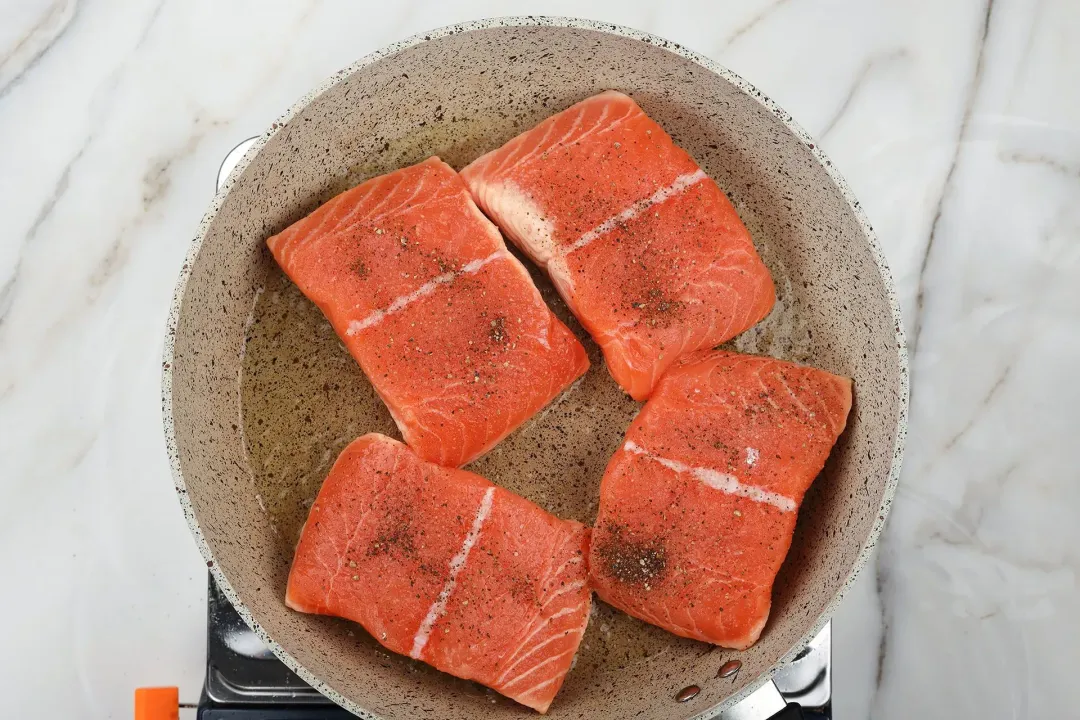
Reduce the heat to medium-low and cook for 7 minutes to make the skin crispy. Flip and cook for another 2 minutes. Transfer to a plate and set aside.
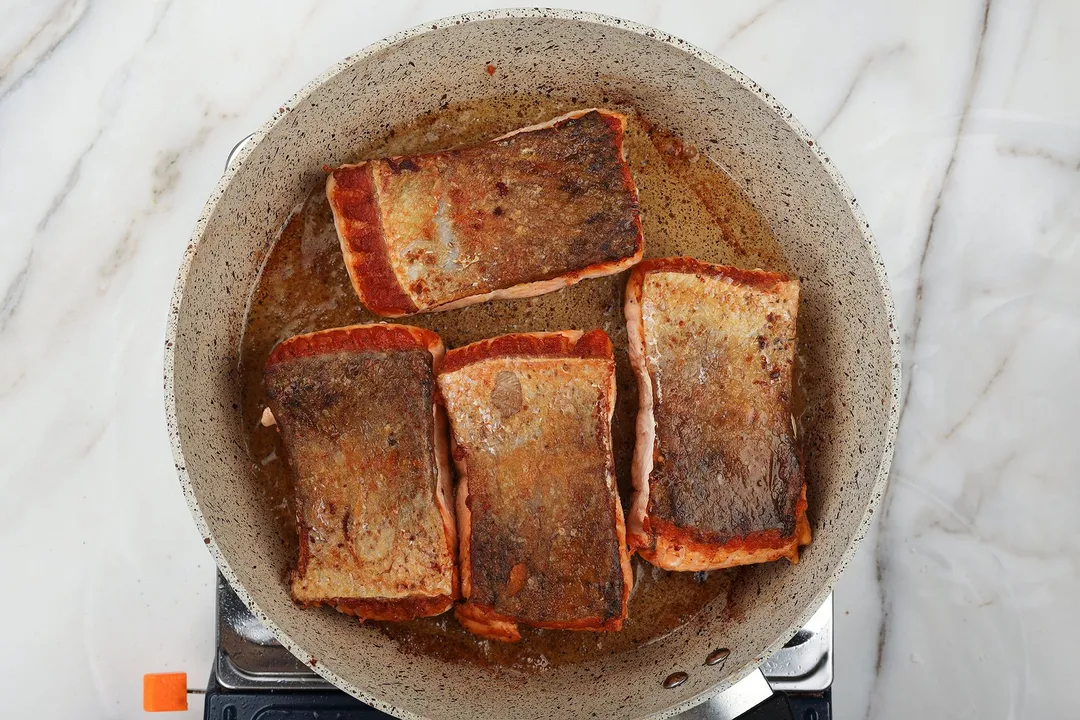
Heat up the chickpeas: Put 20 oz rinsed chickpeas in a bowl and microwave for 2 minutes.
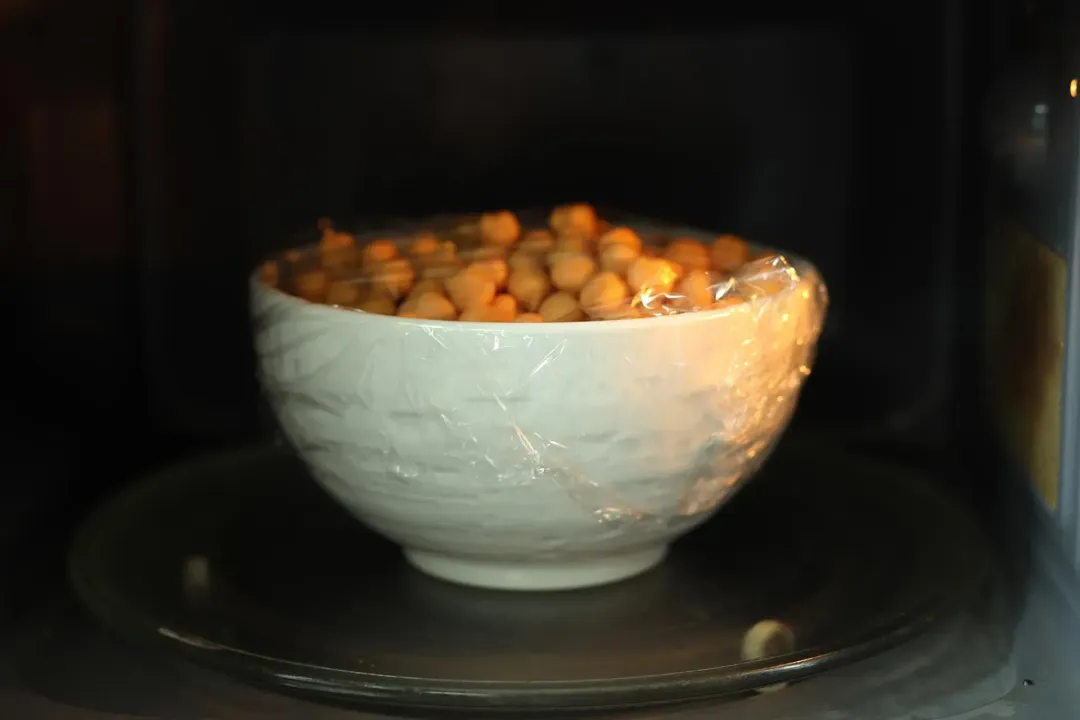
Purée the chickpeas: Transfer the chickpeas to a food processor and blend until smooth.
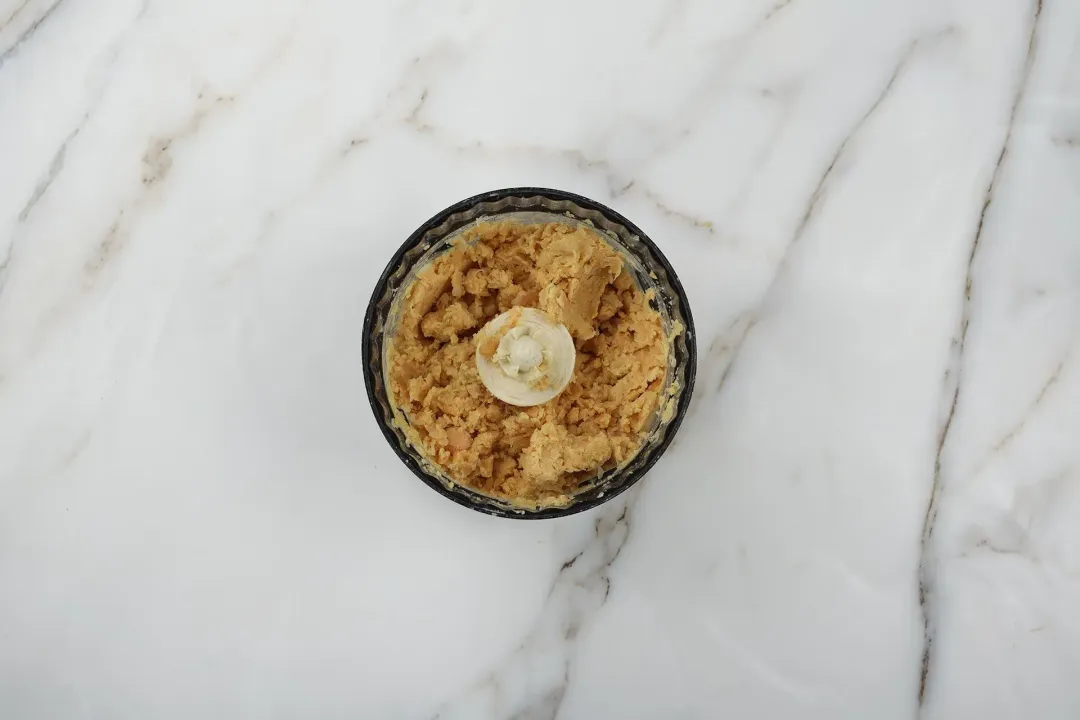
Season the mashed chickpeas: Add the remaining 1/4 tsp salt, 2 tbsp unsalted butter, 1/2 tbsp lemon juice, 1/4 cup whole milk, and 0.5 oz diced red onion to the chickpea mash. Mix well to combine.
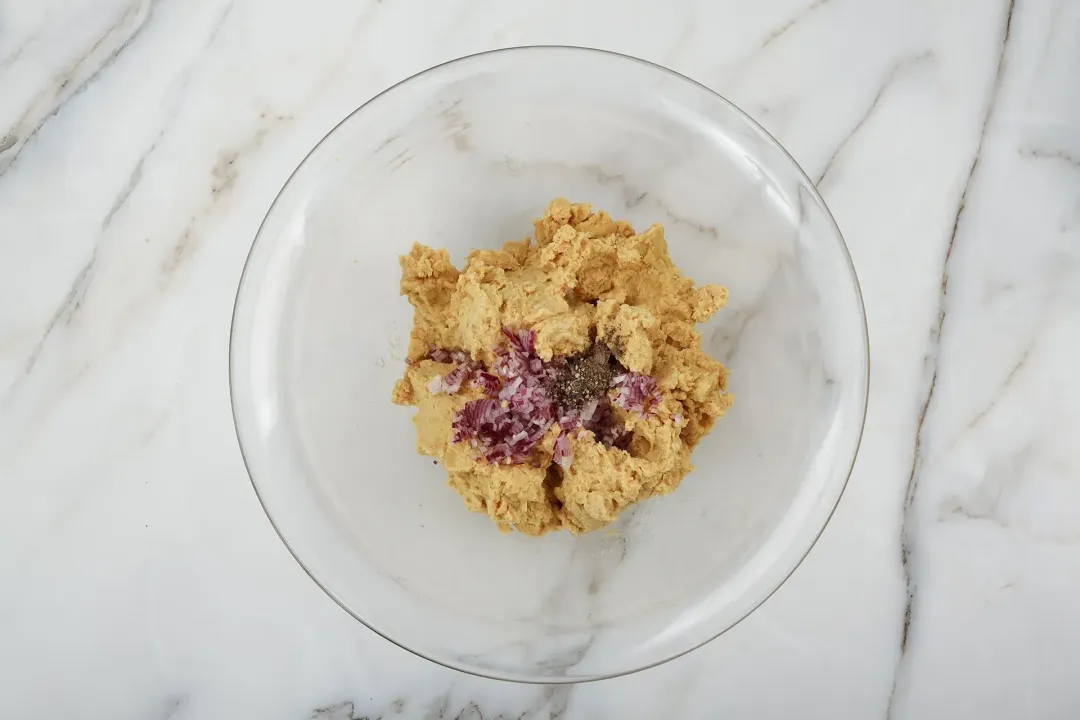
Garnish and serve: Transfer the chickpea mash, boiled vegetables, and salmon filets to a plate. Serve immediately.
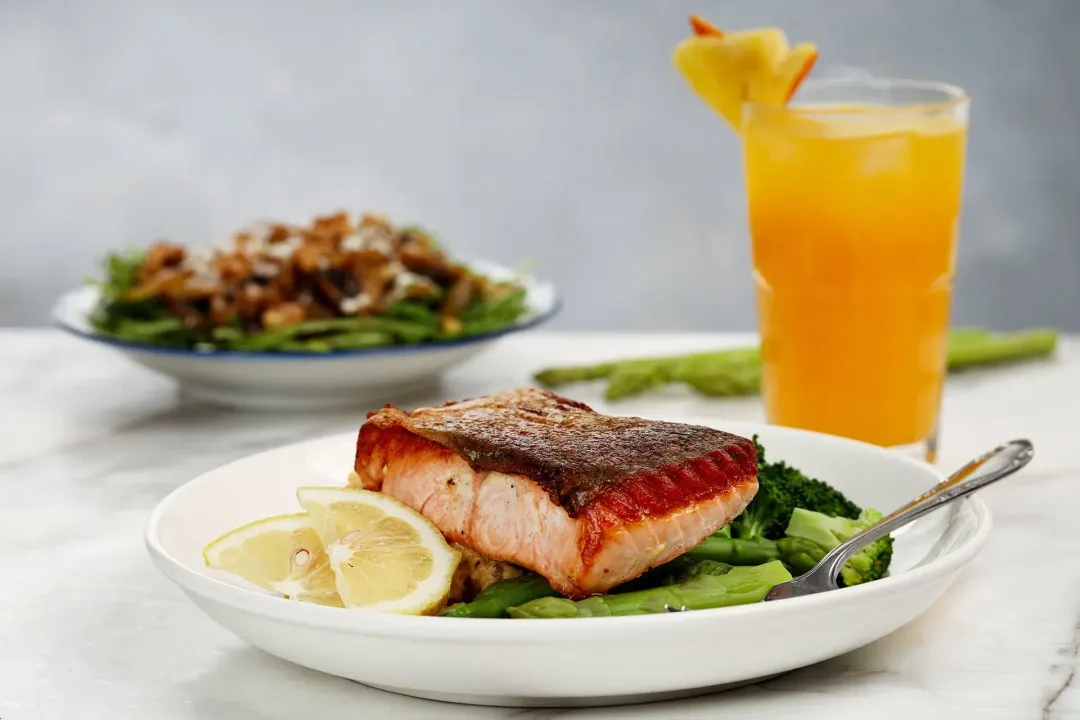
NUTRITION
Tuyet Pham
Head Chef, Culinary ConsultantLuna Regina
Writer, AuthorEmily Rogers, MPH, RDN
Nutrition Reviewer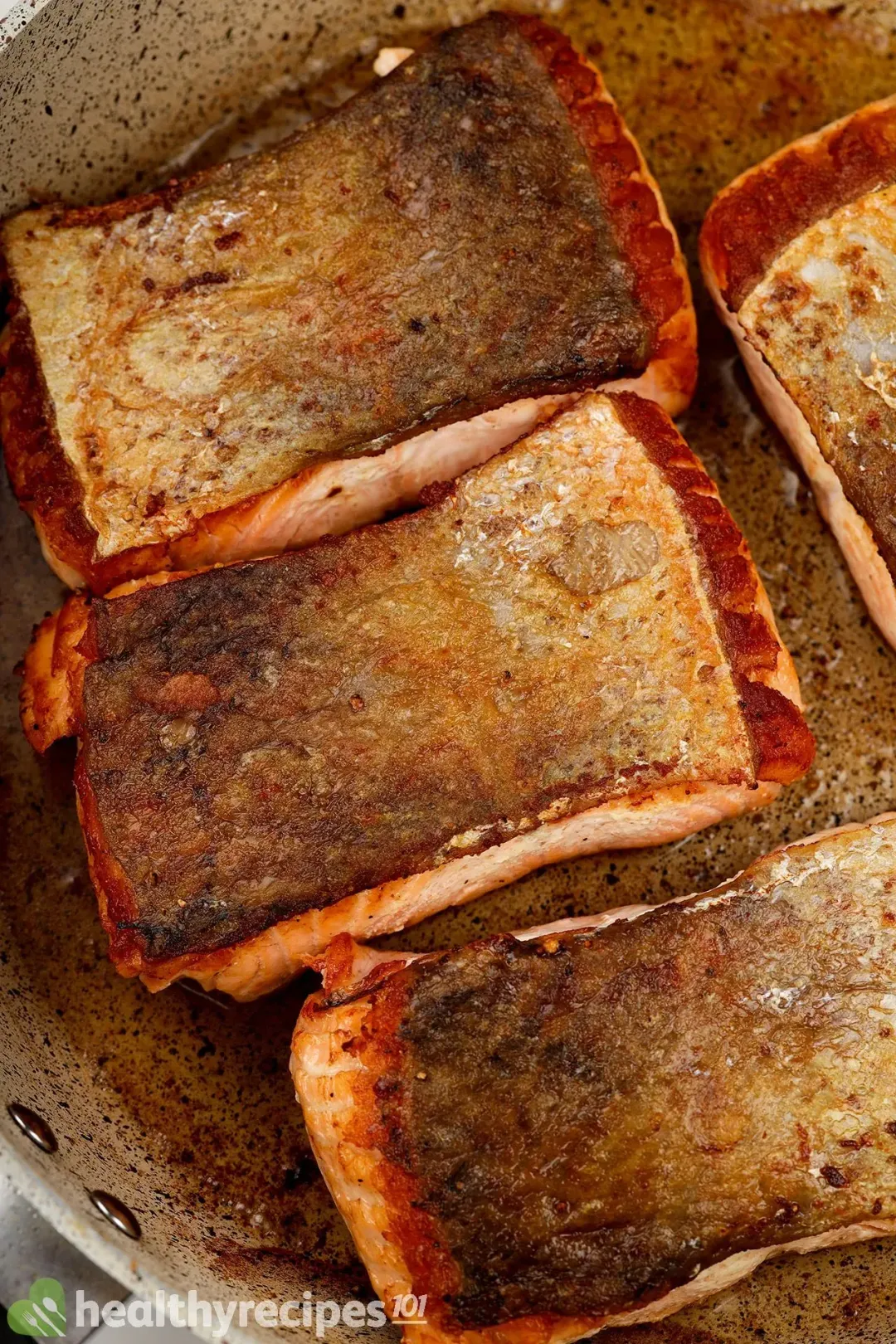
- Anthony DillsThe crispy skin salmon recipe is a must-try for seafood lovers looking for a healthy and delicious meal.
